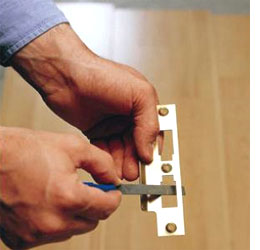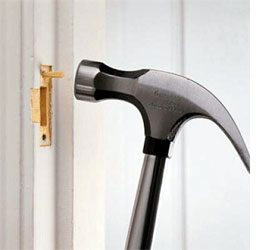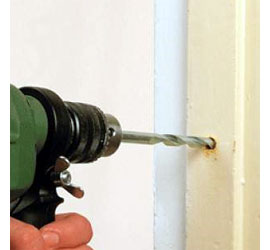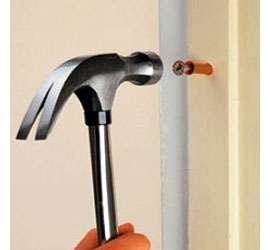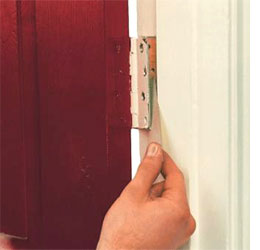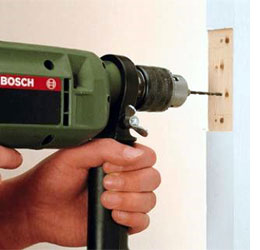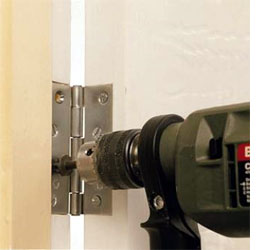Brush up on door repairs
Slamming, banging, sticking or jammed, doors take a lot of beating on a daily basis. If you have doors that need repairs here are some tips to get you started...
Door will not stay closed
If a door sags a little, the latch bolt will be out of alignment with the striking plate. You can correct a small misalignment by unscrewing the plate and enlarging its cut-out with a small metal file.
Otherwise, remove the striking plate and re-fix it a little lower down the frame. Use a sharp chisel and a mallet to extend the recess in which it fits. If the plate has to be moved only a small distance, drill out the old screw holes and fill them with dowels. Drill new pilot holes for the fixing screws.
Fix a loose door frame
Slamming a door often leads to the frame becoming loose. For masonry walls, make new fixings with three easy-drive fischer wall anchors at each side of the frame.
The length of the frame plugs, which come complete with hammer-in screws, should be the thickness of the frame plus at least 60mm. Using the correct size of masonry bit for the size of wallplug that you will be using, drill through the frame and into the wall behind it to the required depth.
Hammer the screw and plug into the hole until the screw head is flush with the frame.
Door that is hard to close
A door that is difficult to close, and tends to spring open, is said to be hinge-bound. The problem is usually caused by hinge recesses cut too deep in either the door edge or in the frame. Generally, when correctly fitted, the hinge flaps should be flush with the surface of the wood.
Protruding screw heads and badly placed hinge flaps can stop a door from closing and even damage the door. Open the door fully and then put a wedge under it. Clear any paint from the slots in the hinge screws, and remove the screws.
Remove the screws from the bottom or lower hinges first, always leaving the top hinge attached with at least one screw until last. Then have a helper hold the door while you remove that last screw.
Hinges may bind because the screws have been put in askew, or because their heads are too large to fit flush in the countersinks in the hinge flaps. Remove the offending screws and replace them with screws with smaller heads. If they will not tighten, pack out the holes with matches, toothpicks and wood glue.
Binding can also be caused by hinge flaps that are set into the frame too near to the door stop or rebate. As the door is closed, its face presses against the stop. Remove the hinges, drill out the old screw holes and plug them with glued dowels. Chisel the dowel ends off flush with the recess.
Drill new fixing holes so that the hinge is farther away from the door stop. The hinge pin should be just clear of the door edge. Fill the resulting gaps beside the repositioned hinges with wood filler.
handyman magazine

